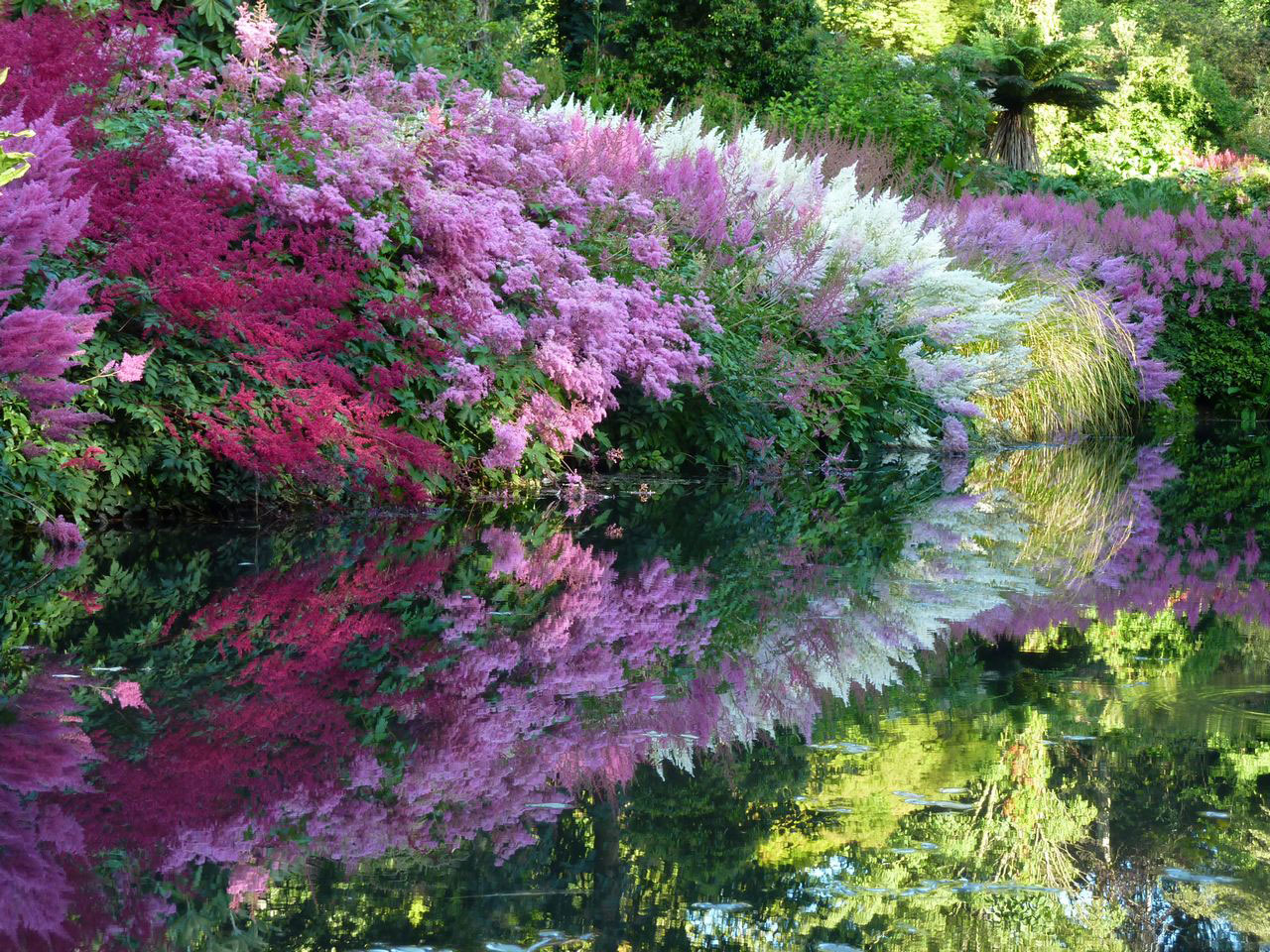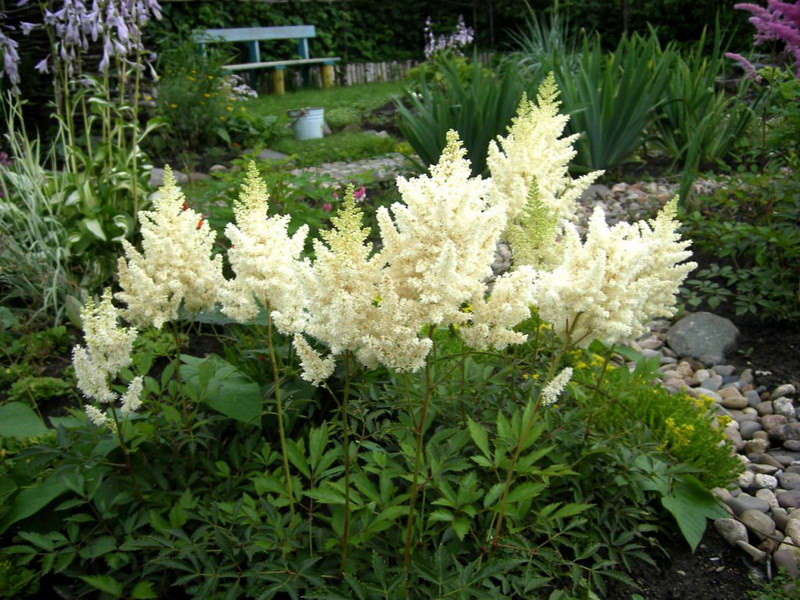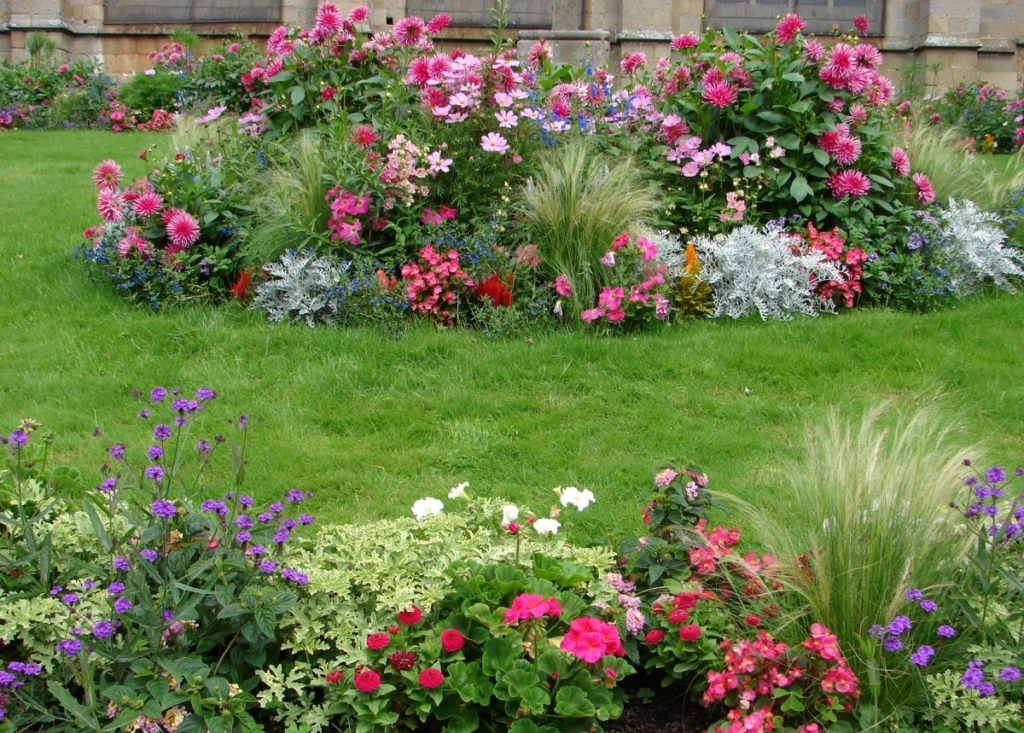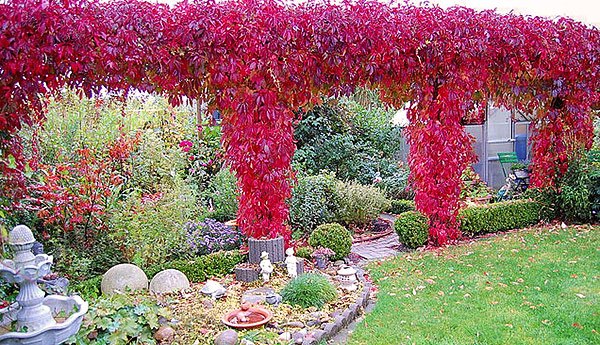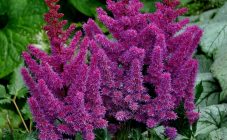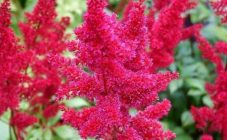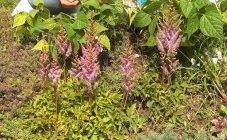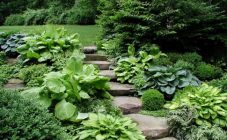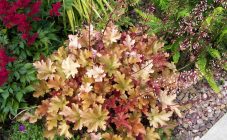Content:
Before using astilba in landscape design, you should decide on the style of garden design. The perennial plant astilba will serve as a decoration throughout the growing season, starting with the appearance of the first foliage in spring and until the culture completely withers with the onset of autumn. Due to its beautiful purple color, astilbe in landscape design is popular with many flower growers. As the plant develops, the color of its foliage will begin to take on a green tint, the leaves will have an unusual shape, with carved fringes around the edges.
The use of astilba in the design of garden plots is advantageous due to the fact that it blooms for several months. The color of the inflorescences can be purple, cream, white and pink.
General principles of landscape design
Before embarking on the successful implementation of your own or borrowed projects for landscaping the site with astilba and other plants, you need to familiarize yourself and carefully study the basic principles and scheme of landscape design:
- Unity of space. The landscape must be uniform and holistic. This effect can be achieved by planting similar plants, while following the general color scheme and giving preference to several forms.
- Simplicity. If there is no special need, then there is no need to complicate the design of the summer cottage. Experts advise using 2 or 3 primary colors and not overdoing it with different boulders and decorative figures.
- Choosing a certain balance for the landscape, which can be asymmetrical and symmetrical. As for the symmetrical balance, it consists in using the same elements, but the effect of a mirror reflection appears in relation to the imaginary axes. Garden paths or a house line can act as such an axis. A group of flowers, their shade and length, as well as the form of plantings can be repeated.
- Smooth transitions between each individual element. Considering the height of the plants, their color range, the size of the leaf plates and the shape, it must be remembered that flowers should replace each other from one group to another. If taller plants blend in to lower ones, it will create a deep spatial effect. Due to this, the garden area will appear visually much more spacious.
To choose the right shades for creating a garden composition, you can follow the triad theory, which involves the use of three colors that are distant from each other in the color wheel at the same distance. For example, you can take yellow, red and blue colors, or green, purple and orange. These shades in combination look very impressive and harmonious. You can do it differently: choose opposite shades (green and red, for example), and then combine with the color that is next to some of them (for example, orange).
Variants of compositions with astilba
Astilbe in garden landscape design is very often used to highlight dark shady areas. This flower also serves as a decoration for unsightly places and artificial reservoirs.One of the popular options for compositions with astilba is a black and white flower garden. To create a monochrome flower bed, you need to plant the seeds of such plants:
- white Siberian irises;
- variegated iris;
- white dotted bells;
- triangular or carob acid, which has purple-black foliage;
- astilbe varieties Deutschland.
It is worth considering that the perennial astilba loves moisture, so it is recommended to plant it on the shore of a pond or an artificial lake, as well as nearby water columns that are located on the site. Near reservoirs, the culture will bloom much longer, and when creating a spectacular composition, you need to plant such plants as European hoof, Astilbe called Arends, dioecious volzhanka, host Siebold and hybrid daylily.
Astilba: combination with other colors
During the first year of life, the foliage of astilba still does not reach its final shapes and sizes. For a beautiful design of flower beds, it is recommended to plant crocuses, hazel grouses and snowdrops together with young astilba. Astilba in a flowerbed with other flowers looks very impressive and original. Next to adult astilbe plants, they plant tenons, umbilicals, lamines and saxifrage. The spring accent is created by planting astilba next to crops such as rhododendron, iberis, capulina and doronicum. When making a reservoir, astilba should be planted next to the following plants:
- host;
- marsh iris;
- anemone;
- lungwort.
If you plan to plant and grow astilba next to rose bushes, then it should be noted that the flower must be planted on the northern side of the garden. Only under this condition, such a neighborhood will not be problematic. By planting astilba in pots and flowerpots, you can create a decorative small garden and not be afraid of agricultural incompatibility of cultures.
Astilba in garden design, in the country
As for the design of landscape design in the country or in the garden, here you must always remember that astilba looks advantageous against the background of the crown of large trees in slightly shaded areas, as well as against the background of such shrubs as hosta, spirea, barberry and juniper. Astilbe is often used to decorate paths in the garden in an original way.
The simultaneous planting of astilbe and spirits can serve as an excellent garden decoration, and if you use high varieties of these plants, you can form various compositions. Landscape designers advise planting Thunberg and Arends astilba together with Wangutt and Douglas spireas, you can combine them with Chinese hybrids or Japanese astilbe. Such plantings will look great in quality:
- site restrictions;
- background planting along the fence line;
- in the garden, under the fruit trees;
- in a wide discount.
The method of single planting of one or another variety of high spreading astilbe will look no less impressive and beautiful.
Low and medium-sized varieties of Astilba in summer cottages are often used to decorate mixborders in combination with bells, irises, sage, daylily or phlox. A successful combination when decorating a garden pond will be the planting of a swimsuit, marsh iris, cannes and a host with astilba.
Astilba in mixborder
The mixborder is the most popular type of flower garden that needs careful maintenance.It is a complex composition of shrubs and flowering plants that bloom at different times and emphasize the advantages of each other. Mixborder with astilba looks very impressive throughout the season, from spring to the onset of cold weather.
Astilba in a mixborder can be combined with bonsai, any herbaceous plants, as well as ornamental grains and potted crops. Astilbe can be planted in a mixborder as a single or group method, but it is imperative to select plants for the neighborhood in combination with a shade of foliage and inflorescences.
Before you start creating a mixborder on your site, you need to familiarize yourself with the general rules that will help you avoid common mistakes. The basic principles of mixborder implementation include:
- When planting astilba together with other plants, it should be remembered that the flowers will grow, therefore, the density of their planting must be observed, taking into account the growth of shrubs and perennials.
- The mixborder will look spectacular if viewed from a short distance, while covering the entire composition as a whole, so you need to leave a small space between it and the path in the form of a strip of lawn 0.5 m wide.
- Mixborders are considered to be borders, but despite this, they can have any shape. As for the view of the mixborder, it can be either one-sided (on the other side there can be a wall or a fence), or viewed from all sides.
As for the astilbe mixborder, the best place to create it is the area located near the buildings, the fence, as well as along the walls of the structures and at the edge of the terrace.
Astilba in the garden: landscape tricks
When designing landscape design with astilbe planting, it is imperative to take into account the moment of thinking over the color scheme. The garden bed can look monochrome if it consists of closely spaced astilbe, and it can be contrasting when using bright juicy shades of various subspecies. In the shady corners of the garden, astilbe will feel good, actively grow and bloom. But at the same time, you can create a flower bed by planting different varieties of this plant - it is recommended to sow low-growing astilba in the foreground, Chinese astilba in the second, and tall astilba in the third (for example, David's astilba).
Before decorating a summer cottage or garden plot, you need to carefully study the information on how to use astilba in landscape design in combination with other colors. This will help to avoid unwanted problems and inconveniences, and will allow you to enjoy the created landscape.
